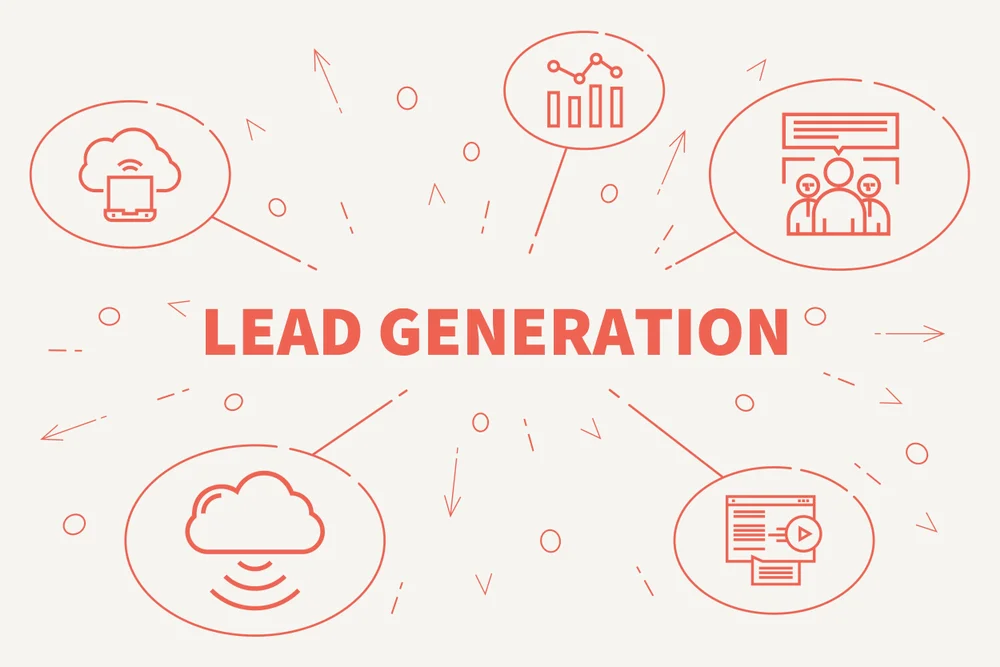We all know that businesses can’t rely on just one method to reach their audience today. Whether you’re connecting through social media, email, in-store promotions, or paid ads, your customers are expecting to hear from you across several platforms, and they want that experience to feel thoughtful and cohesive.
That’s where marketing strategy plays such an integral role in creating awareness and conversions for your business. Choosing the right approach can influence how customers feel about your brand, how smoothly your campaigns run, and whether your message leads to actual revenue.
So, what’s the best path forward? The answer often comes down to a simple but important distinction: multichannel vs. omnichannel. What do these approaches mean, and how do you know which one fits your business best? Let’s take a look.
Definitions of Multichannel and Omnichannel Marketing
Some marketers and business owners use the terms multichannel and omnichannel interchangeably. But the truth is, while they both involve communicating across multiple platforms, these two approaches are not the same. Understanding the difference can help you make smarter decisions about how you reach and engage your audience.
Multichannel Marketing
Multichannel marketing is exactly what it sounds like: using more than one channel to reach your customers. These might include your website, email, social media, SMS, paid ads, or even direct mail. The goal is to be present in as many places as possible to meet your customers where they are.
However, with multichannel marketing, each channel may operate on its own. Your Instagram posts, email campaigns, and website may all be active, but they’re not necessarily working together in a connected way. This can lead to a disjointed customer journey, even if each channel is performing well on its own.
Omnichannel Marketing
Omnichannel marketing takes things a step further. Instead of separate channels running in parallel, omnichannel marketing connects every channel so they work together.
With this approach, the goal is to create a consistent and personalized customer experience, no matter where or how someone interacts with your brand. For example, a customer might receive an email, click to browse your site, and then get a personalized ad or message based on their activity, all without skipping a beat.
This requires more coordination behind the scenes, especially when it comes to syncing data across platforms. But when done well, it helps businesses deliver marketing that feels more relevant and customer-centered.
A Comparison: Multichannel vs. Omnichannel Marketing
Are you feeling a bit confused? Here is a quick chart to help you understand the two approaches.

Key Differences Between Multichannel and Omnichannel
As consumers become more digitally connected, the way they interact with businesses is evolving fast. An estimated 72% of consumers say they prefer to engage with brands through multiple channels, and 64% expect a seamless experience when doing so. That means simply being present on multiple platforms isn’t enough. How those platforms work together can make a big difference in how people perceive your brand.
Here’s how multichannel and omnichannel strategies stack up in key areas:
Customer Experience: Consistency vs. Fragmentation
- Multichannel: Each platform often operates independently, leading to a fragmented experience. A customer may get a totally different message or feel depending on the channel.
- Omnichannel: Creates a consistent and connected journey across all platforms, meeting customers with the right message at the right time.
Technology/Data Integration
- Multichannel: Data is often siloed, with each channel gathering insights independently.
- Omnichannel: Data is centralized, allowing for a more complete view of the customer and better personalization.
Goals
- Multichannel: Focuses on building presence across as many platforms as possible.
- Omnichannel: Prioritizes delivering a connected, personalized customer experience.
Team Approach
- Multichannel: Marketing teams may be divided by channel (e.g., email vs. social).
- Omnichannel: Encourages collaboration across departments to align messaging and strategy.
Examples of Each Marketing Approach
Need some examples? It’s one thing to define multichannel and omnichannel marketing. It’s another to see how they actually show up in the real world. Looking at how each strategy plays out in practice can help clarify which one might work best for your business goals.
Let’s look more closely.
Multichannel Example
A skincare brand runs a sale. They promote it through Instagram ads, send an email to their subscribers, and update their website homepage. But here’s the catch:
- The Instagram ad focuses on a product bundle,
- The email highlights a 20% discount on individual items,
- The website simply mentions "limited-time savings."
While each channel is active, the messaging is disjointed. Customers may see different offers or language depending on where they interact. This is a typical multichannel approach. While each platform is used, they are not in sync.
Omnichannel Example
A customer browses running shoes on a sporting goods store’s website. They leave without purchasing.
- Later, they get an SMS reminder with a personalized discount for the exact shoes they viewed.
- That weekend, they walk into a nearby store and are greeted with an in-store promo on the same style.
Every touchpoint connects. Same product, same message, same goal. That’s omnichannel.

When to Use Each Strategy
When looking at the examples we shared above, it might seem like omnichannel is the way to go each and every time. And while it's a strong approach for many businesses, it's not always the most practical, especially depending on your stage of growth, team size, or resources.
Capturing and keeping a customer’s attention is getting harder. In fact, 50% of B2B marketers say it’s become increasingly difficult in recent years. That means finding the right strategy isn’t about following a trend. It’s actually about knowing what’s realistic for your business today and what will support your growth tomorrow.
Here’s a closer look at when each approach makes the most sense:
Multichannel Marketing
- Best for smaller teams or limited resources: If your business doesn’t have the tech or manpower to sync every platform, multichannel still allows you to meet customers where they are.
- Great for early-stage digital transformation: If you’re just beginning to expand your marketing presence, multichannel is a manageable and flexible way to experiment across platforms.
Omnichannel Marketing
- Ideal for brands with the tools and data to centralize experiences: If you have access to customer relationship management (CRM) software, integrated analytics, and a skilled team, omnichannel can help you make the most of it.
- Recommended for businesses with high-value customer relationships: Industries like retail, finance, and healthcare benefit from consistent, personalized experiences where trust and loyalty are at stake.
Choosing the right path depends on your team’s capacity, tech stack, and how your customers expect to interact with your brand.
Benefits of Omnichannel Marketing
If you're weighing the value of building a more connected marketing experience, the numbers speak volumes. Omnichannel customers tend to spend 30% more than those who shop through a single channel, and they have a 30% higher lifetime value. That’s a long-term growth that stems from deeper engagement.
By connecting the dots across platforms, omnichannel marketing creates a more cohesive and rewarding experience for both the customer and the brand. Here’s what that can lead to:
- Higher customer satisfaction and retention: When shoppers feel seen and supported across every touchpoint, they’re more likely to stick around—and come back again and again.
- Better data utilization and personalization: Centralized data allows for smarter, more relevant messaging based on user behavior and preferences.
- Stronger brand consistency: With every channel aligned, your brand voice, tone, and messaging feel the same, whether someone’s on your site, reading an email, or walking into your store.
- Increased ROI from integrated campaigns: Campaigns that work together across multiple platforms tend to perform better, stretch further, and drive stronger results.
Challenges in Moving from Multichannel to Omnichannel
Are you thinking that making the move to omnichannel is best for your business? You’re not alone, and for good reason. Retailers using three or more channels see 250% more consumer engagement compared to those using just one. Engagement rates also tell the story: retailers with three or more channels average a 19.0% engagement rate, while those with only one channel sit at just 5.4%.
The benefits are clear, but making the leap from multichannel to omnichannel isn’t always simple. It takes more than just a decision. Here are some of the common challenges businesses face:
- Platform integration and data unification: Connecting all systems (POS, website, email, ads, CRM) into a single view of the customer can be a complex process.
- Organizational silos and cross-functional collaboration: Marketing, sales, customer service, and IT all need to work together. That shift requires a culture of collaboration, not just new tools.
- Need for marketing automation tools and CRMs: Without the right platforms in place, it’s hard to manage personalized messaging or track customer behavior across channels.
- Requires time and investment in strategy and infrastructure: Moving to omnichannel isn’t an overnight fix. It involves planning, tech upgrades, and often a shift in how teams operate.
So, how can you make the move smoother? Start by auditing your existing channels and identifying where gaps exist. Invest in tools that centralize your data and focus on building alignment across departments. Even small steps, like syncing messaging across two platforms, can move you in the right direction.

Choosing the Right Marketing Approach for Your Business
Both multichannel and omnichannel strategies involve using multiple platforms to reach your audience, but the difference lies in how those platforms work together. While multichannel focuses on being active in many places, omnichannel creates a more connected, customer-centered experience across every touchpoint.
The right approach depends on your team’s goals, your existing tools, and how well you understand your customer’s journey. Whether you're just getting started or ready to take things to the next level, LAMA can support your growth.
From ads, content development, and SEO to direct mail, website development, and branding, we help businesses bring consistency and purpose to every channel.
Need help building a flawless and repeatable customer journey? Contact our team today to explore how our omnichannel marketing solutions can move your business forward.



.webp)











